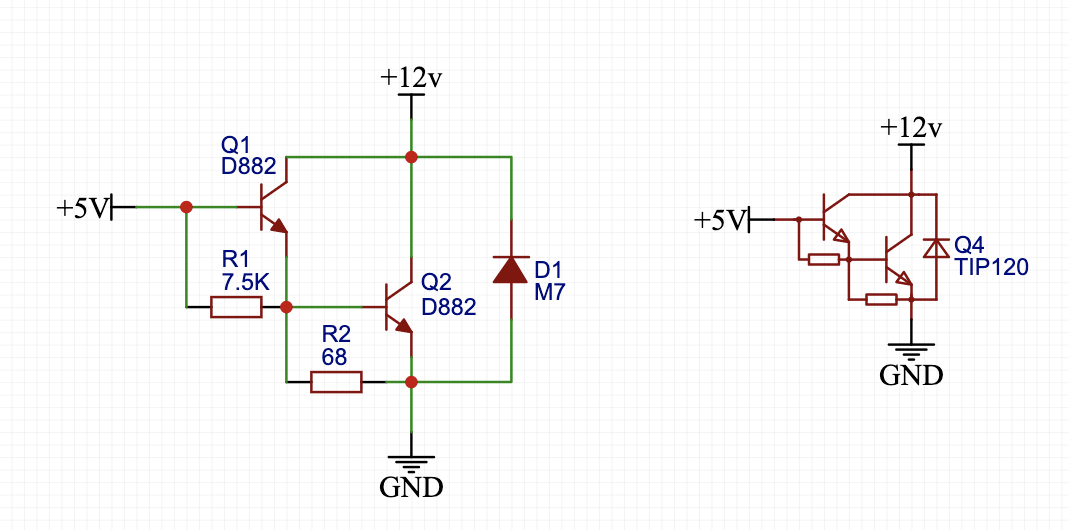I am getting into circuits and trying to improve my knowledge but even though it might sound like a silly question but here is my story short:
What I am trying to do
I am building a circuit to drive an LED strip (12v) out of a Raspberry Pi using PWM output.
It worked out perfectly using a TIP120 on the breadboard using the following example:
My goals
Now that it is working, I am building a PCB to send to JLCPB to have it printed and assembled so I wish to use basic parts as much as possible and ended up selecting a D882 transistor which is not a Darlington. I heard that it might cause issues to my actual circuit and not expecting the same result as with the TIP120.
So a using D882 transistor I kind of recreated the schematic of the TIP120.
Am I silly to say that this will do the same thing as the TIP120?
Am I in the wrong way and another SMD component would do the trick?
Update
Channel 1 at 100%, seem to get alot of noise but Channel 2 at 50% is quite stable.
Here you can see the quick simple prototype






